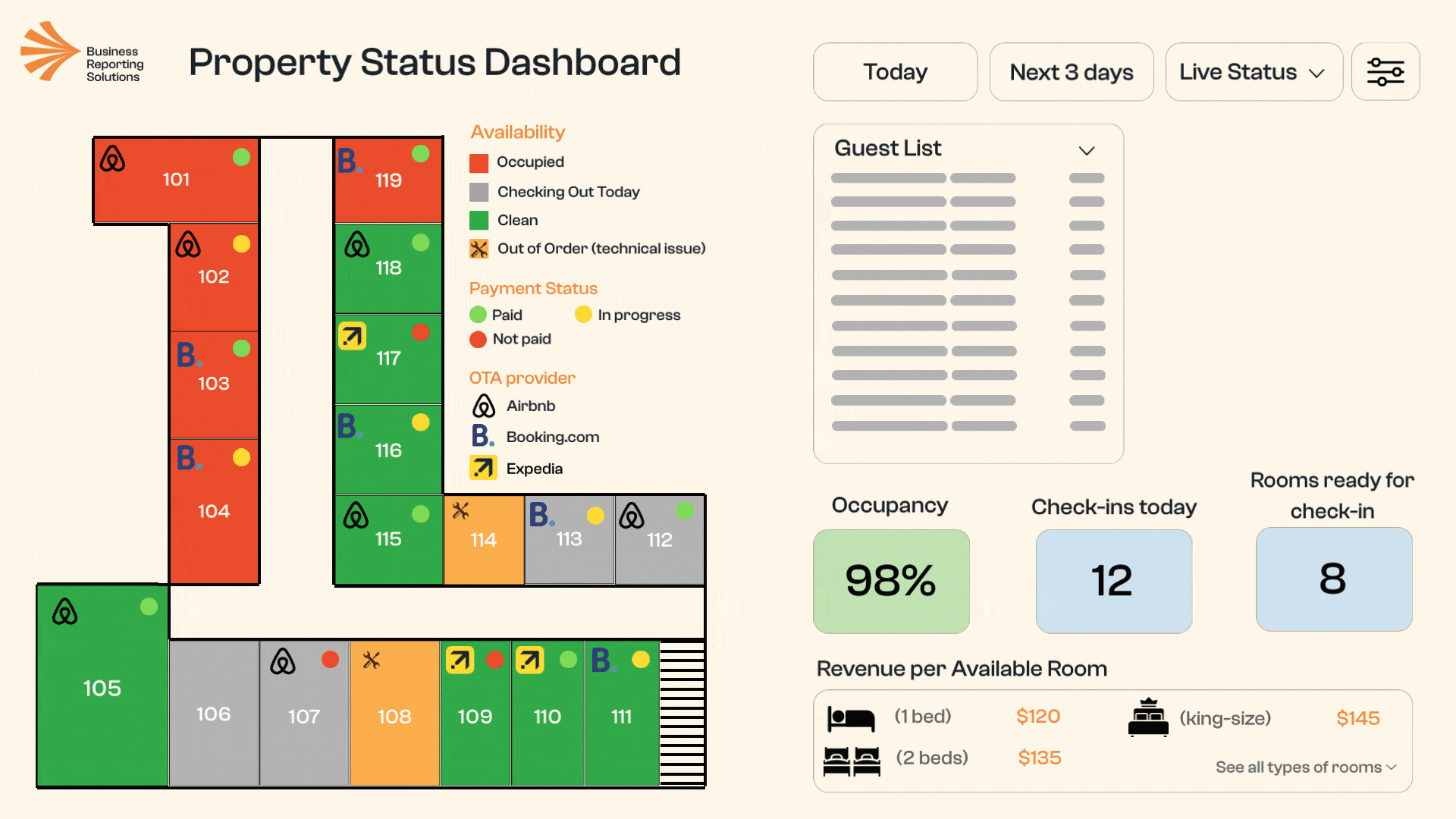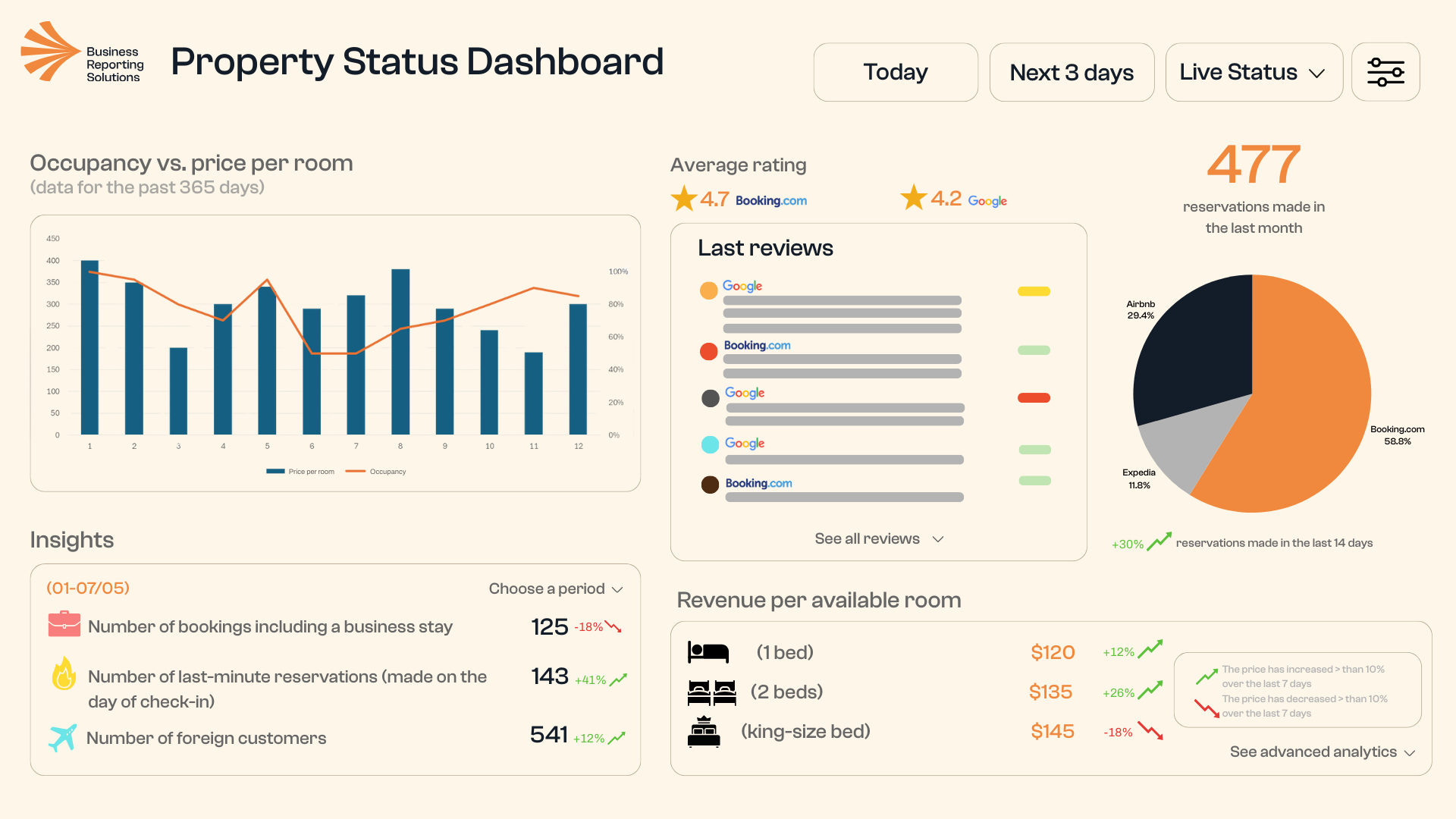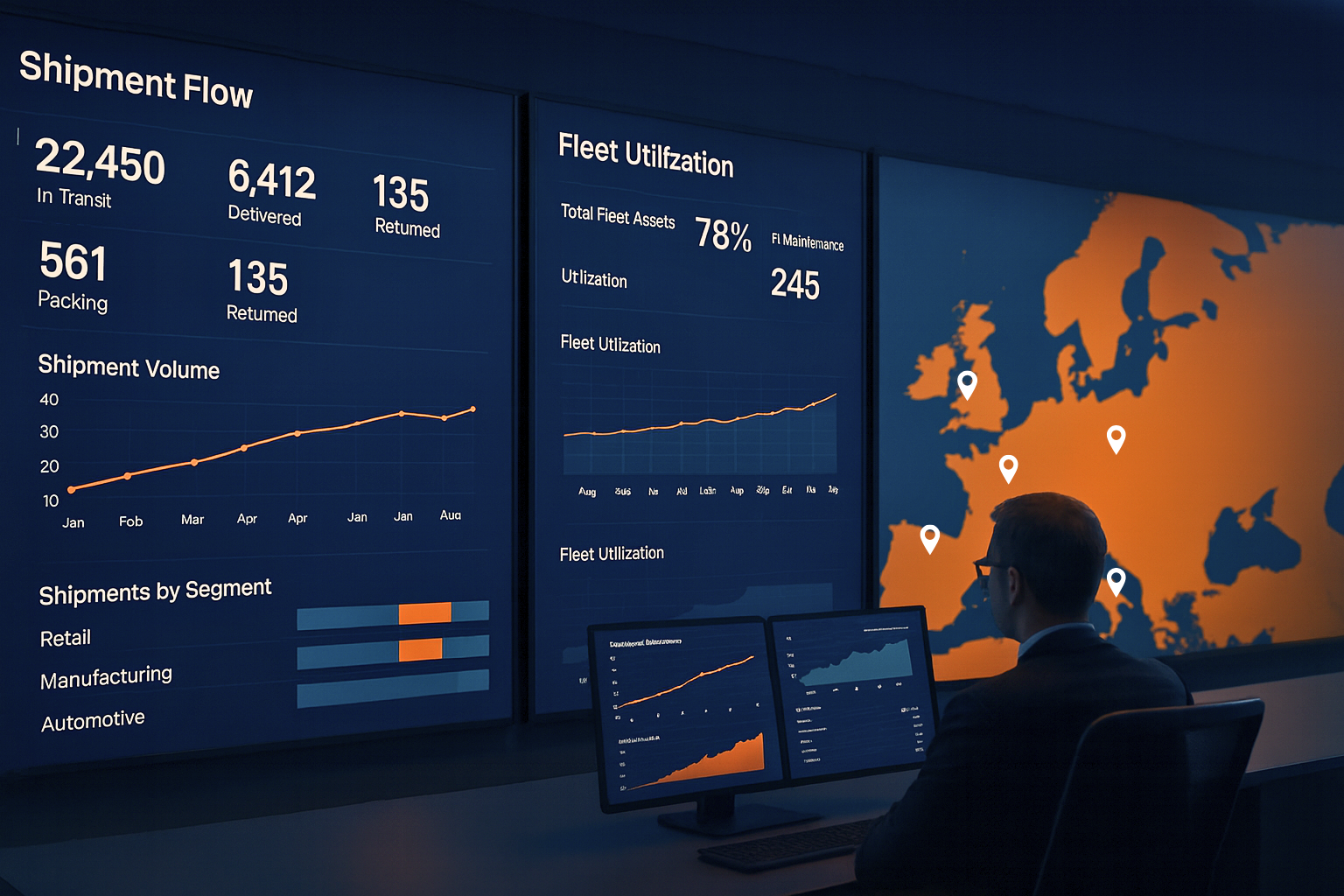
Still making hotel decisions based on guesswork?
Learn how data analysis can bring clarity to your daily operations. This article shows how hotel managers can combine information from booking systems, guest databases, and finances to get a full picture of what’s really happening and make faster, smarter decisions without overhauling their entire IT setup.
Table of Contents
How many times has your hotel’s rating dropped due to avoidable situations — like overbooking?
Most hotels rely on complex operational systems such as Opera, Protel or local solutions. These platforms manage reservations, guest data, finances, sales, and daily logistics. They’re often complemented by CRM (Customer Relationship Management) systems, channel managers, and integrations with OTA (Online Travel Agency) platforms.
In many companies, multiple systems or portals operate independently without communicating with each other. While each supports day-to-day operations, it’s difficult to get a full picture. So when reservations exceed availability, like in overbooking, it’s often not a system failure — just a lack of timely insight. The right tools could flag such risks early. Besides, it’s hard to quickly assess whether a promotion increased bookings, which sales channel brings more valuable guests, or how costs fluctuate with occupancy levels. Simply having the data isn’t enough if it can’t be easily compared and interpreted. Only by combining data from various sources can you create a coherent whole and make better decisions.
How Can Automation and AI Help?
A data-driven approach means basing actions on data analysis rather than intuition. In the case of a hotel, it means merging information from various systems — PMS, reservations, CRM, finances — into a single coherent view. Instead of browsing through data in multiple places, all key information is available in one spot, in the form of clear visualizations. This makes it easier to track trends, identify problems, and make decisions based on real data.
Thanks to a data-driven approach and Business Intelligence (BI), a hotel management team gains:
- Real-time insight into occupancy levels — with filters by location, room type, booking channel, or season;
- Quick identification of low-occupancy days, with the ability to compare historical data and dynamically analyze revenue;
- Operational summaries that combine data from PMS, CRM, and sales systems, supporting decisions on staffing or promotion directions;
- Cost control and operational efficiency — based on actual data, not assumptions.
This approach significantly shortens analysis time, improves decision accuracy, and enables faster responses to market changes.

This is a sample dashboard for a lodging facility, showing occupancy, booking sources, guest reviews, and revenue.
Simple, Not Revolutionary
Implementing Business Intelligence doesn’t have to be a technological revolution. Often, it’s enough to define a few key business questions and start with simple tools like Power BI or Strategy One. Integration with an existing PMS or exporting data from Excel can be a sufficient starting point for more structured data work.
This approach doesn’t require large investments or lengthy deployments. The goal is to stop guessing. To base decisions on numbers, not just gut feelings. Even a small improvement in access to information can lead to real savings, better resource utilization, and greater predictability.
How Can a Company Like Ours Help?
As data processing specialists, we help various systems communicate with each other — like PMS, CRM, financial or reporting systems. We extract only the data needed at a given moment and present it in a consistent and readable format. As a result, hotel managers get a full picture of the situation without having to search through multiple sources — they can react faster, make data-driven decisions, and better plan operational activities.

A sample hotel report showing the current status of rooms, reservations, payments, and key metrics — all in one place, in real time.
Start Making Decisions You Can Justify
If you’re tired of searching for data across multiple systems and making decisions without a clear rationale, it’s worth considering BI implementation. It’s a tool that offers greater control and confidence in your actions.
At BRSolutions, we help organize your data, build the right metrics, and create clear reports. All to make everyday operational decisions easier, faster, and more accurate.
Let’s start with a simple question: what do you want to see on your screen when planning the next workweek?



